Callot’s prints combine keen observation of reality with an astonishing imagination. In his sizeable print oeuvre he illustrated the most varied aspects of life in early 17th-century society. This selection of about 80 prints grouped into five themes shows the wide variety of his work. They offer a wonderful insight into the artist’s world.
1. Pageant
The patronage of the ruling Medici family, which had a particular fondness for art and theatre, enabled Florence to develop into a major intellectual and artistic centre as from the 15th century. Grand festivities and brilliant pageants were held that showed off the power and wealth of the court. All manner of artists, one of whom was Jacques Callot, were engaged to stage these pageants and to immortalise them in prints. As the residence of the Dukes of Lorraine at the start of the 17th century, Nancy had a similar flourishing court culture. There too Callot recorded in prints the festivities and pageants organised by the court and the city.
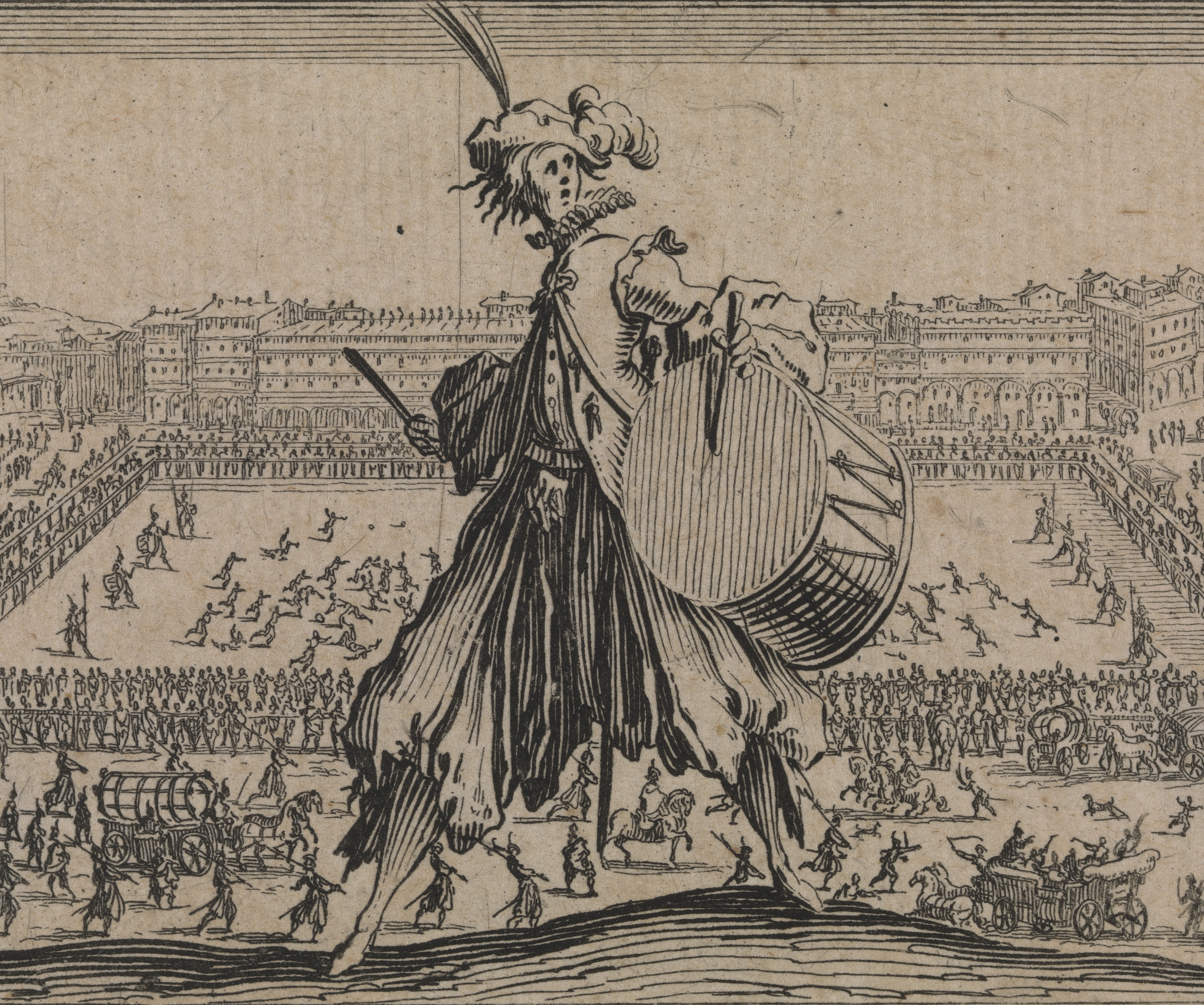
The Fan
Callot designed this print, with its unusual fan shape, on commission to Cosimo de Medici II (1590 - 1621) on the occasion of the annual battle on the River Arno in Florence, between the guilds of the weavers and the dyers. The print was glued onto cardboard fans and handed out to the public. This explains why so few good original prints have been preserved. One of the figures at the edge of the cartouche is holding one of these fans.
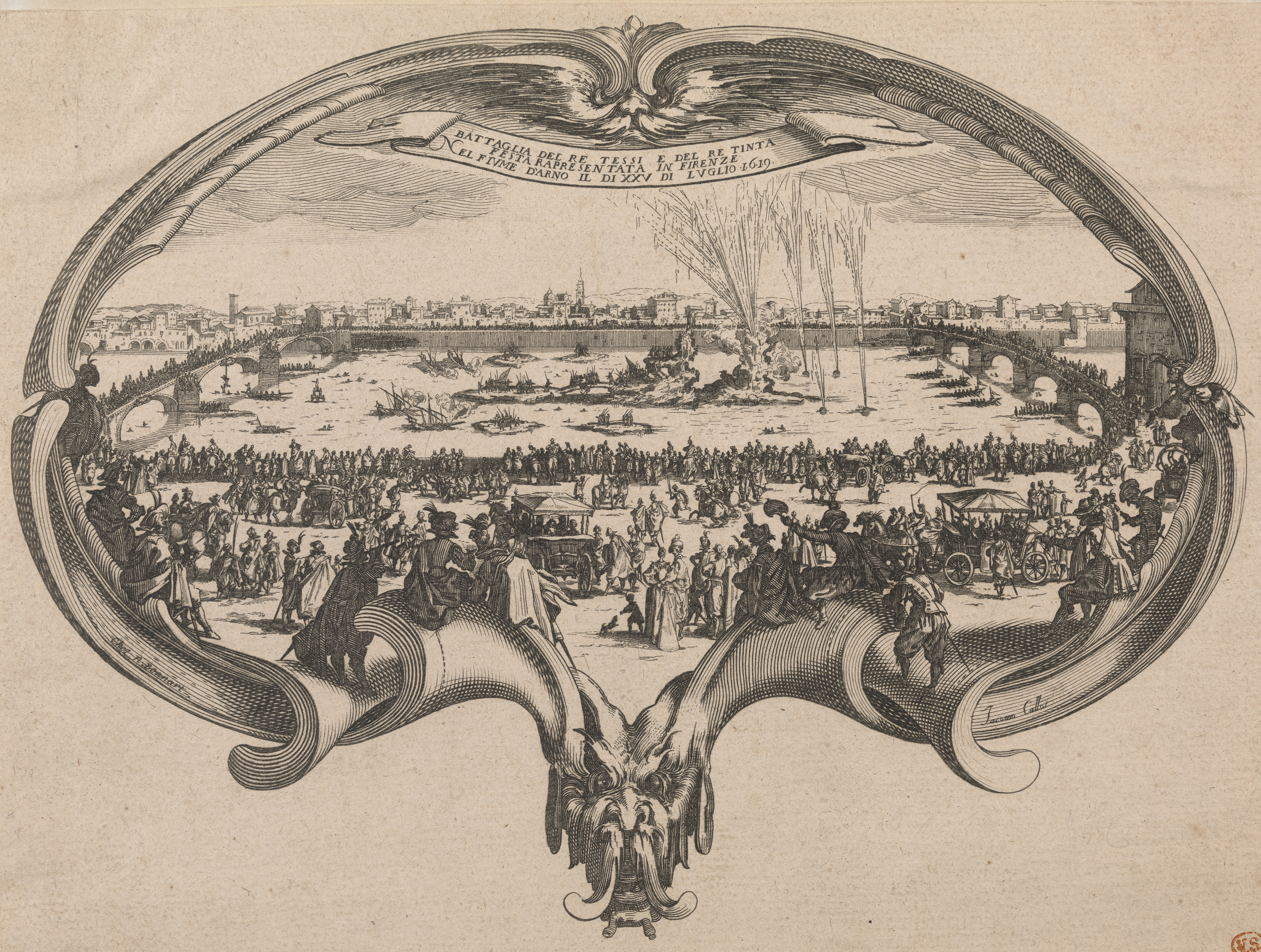
The Combat at the Barrier
This series of prints illustrates the festivities put on for the visit made by the Duchess of Chevreuse to the ducal court in Nancy in 1627. The pageant consisted of an allegorical military procession, spectacular machinery, music, fireworks and a tournament in the banqueting hall of the ducal palace.

The Carrière Square or Rue Neuve in Nancy
This print depicts the main square in Nancy with an encyclopaedic presentation of activities that take place there, such as duels, tournaments and performances by travelling artists and acrobats. Callot shows the square in the afternoon sun, which shines on the noble and uniform houses of the aristocracy on the right. The buildings on the side in shadow – where Callot himself lived – are more modest. In the background is the ducal palace.

2. Varie figure
Callot’s prints include figures from various levels of the population, from beggars to the greatest nobles. They represent the protagonists of 17th-century society going about their daily business. Several prints from his renowned 50-part series entitled Capricci di varie figure are shown at various points in the exhibition. Callot often puts one or more figures in a darker tone in the foreground, while keeping the rest of the composition in a lighter tone. In this way he creates a convincing sense of depth.
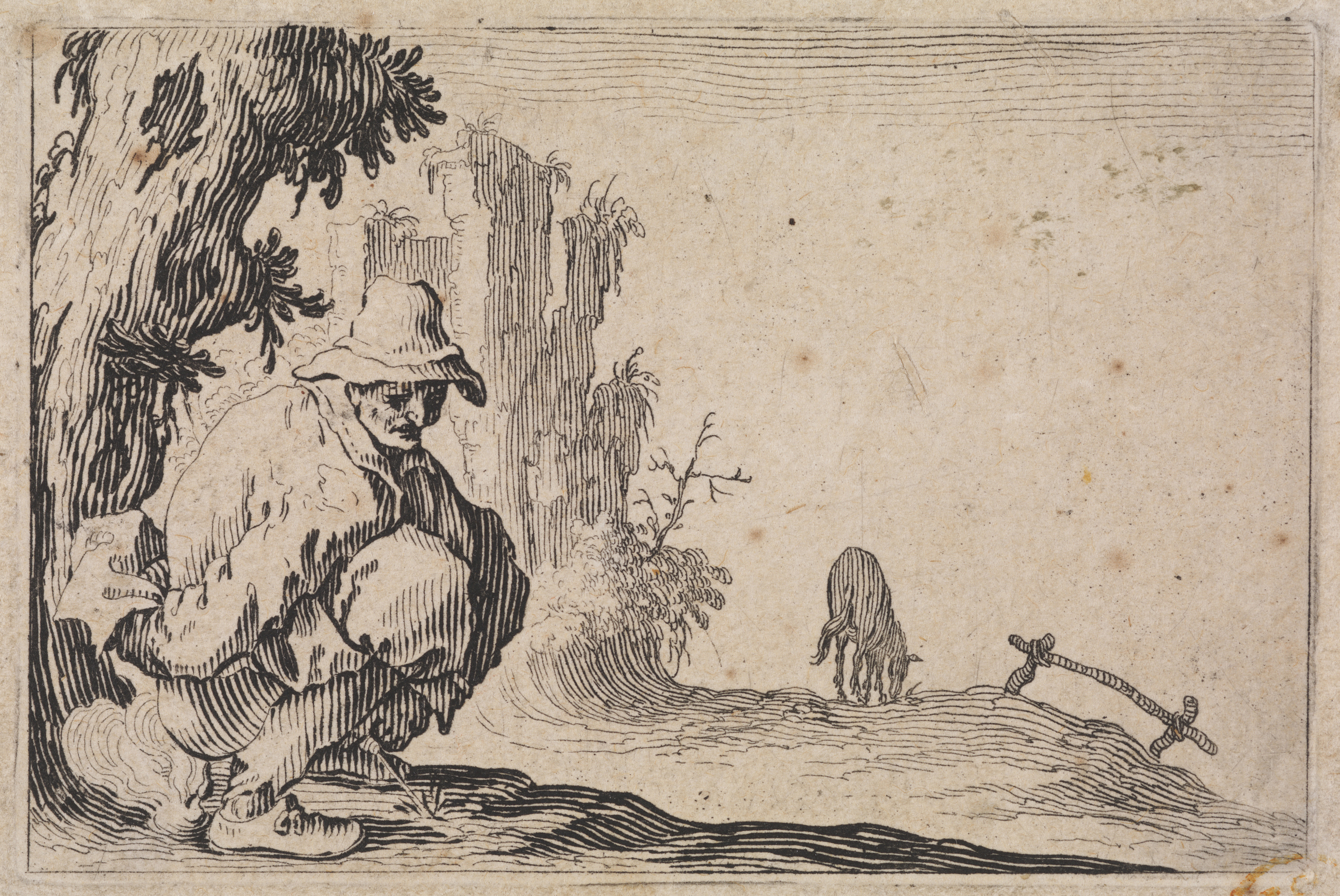
Several Dwarves by Jacques Callot
Together with his Temptation of Saint Anthony (see ‘religion’ section), it was Callot’s series of prints of misshapen dwarves that most determined his image as an artist of grotesque imaginary creatures reminiscent of Hieronymus Bosch (c.1450-1516) and Pieter Bruegel (1525/30-1569). Contemporary sources tell us that groups of ‘gobbi’ (Italian for ‘dwarves’) travelled around Italy taking part in court festivities and public events. Callot undoubtedly greatly exaggerated the dwarves’ physiognomy in his prints.

Figures from the Italian commedia dell'arte
Commedia dell’arte was improvised comic theatre performed by touring actors who played a fixed set of characters, including the Capitano (the young man in love), Scapino (the servant) and Pantalone (the old man in love) shown here. This form of theatre was popular in Italy and France from the 16th to the 18th century. Although they were actually a combination of fantasy and reality, Callot’s portrayals of this theatre defined our image of the burlesque culture of the time and the scenery and stage design of the commedia dell’arte.
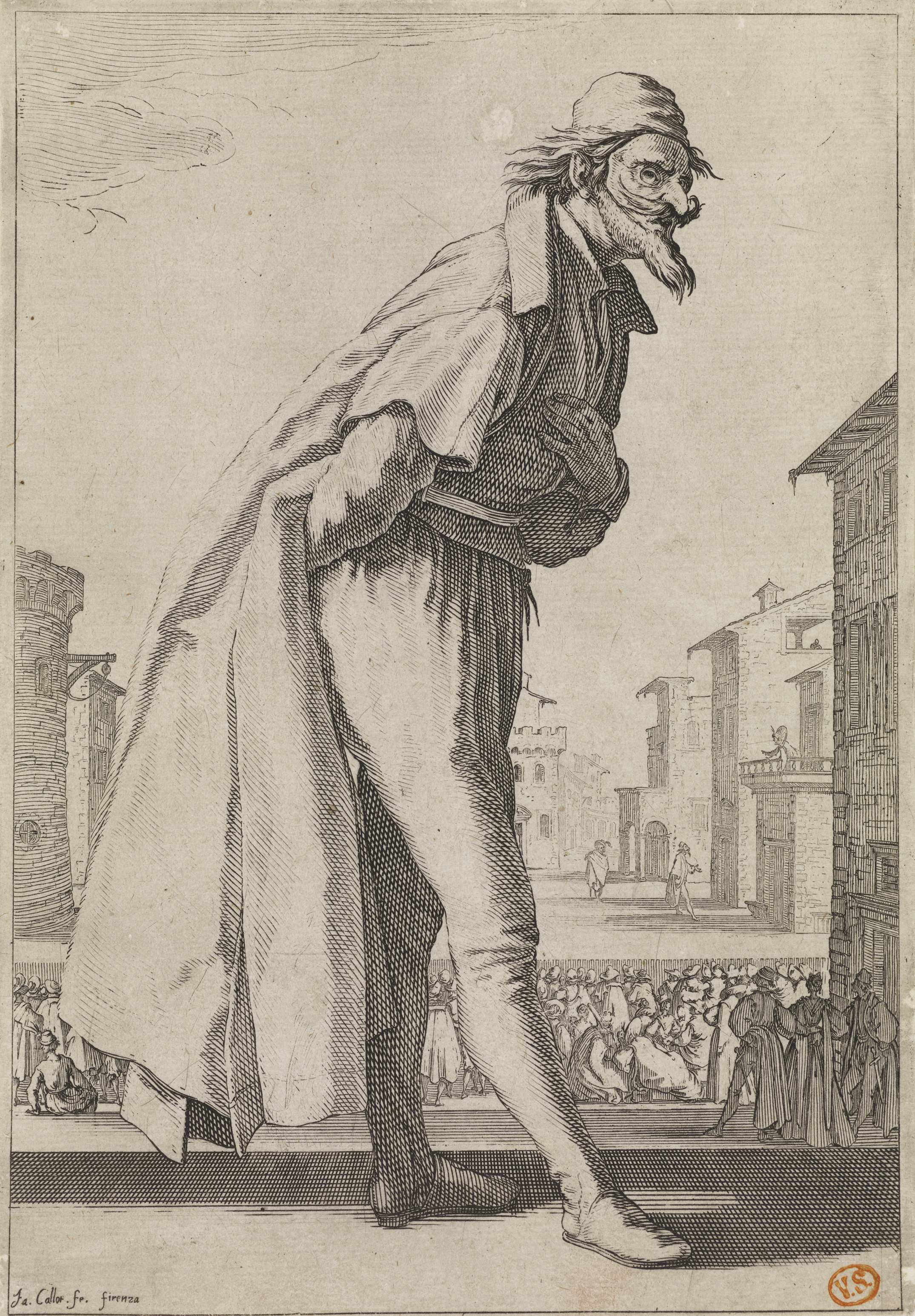
3. War
In the late 16th and early 17th centuries, wars and religious disputes were almost continuous. In Florence, Callot illustrated the military operations carried out by the Catholic Duke Ferdinand I of Tuscany (1549-1609) against the Islamic threat in the Mediterranean region. Once he had arrived in Lorraine, Callot was confronted with the Thirty Years’ War (1618-1648) between the Catholic Holy Roman Empire and the Protestant states, in which France sided with the Protestants and the Duke of Lorraine with the Catholics. In Nancy, Callot pictured various aspects of life and times during war, from historical sieges and military exercises to the pernicious effects of war on society.
The Miseries of War, Large and Small
In his celebrated series on the horrors of war, Callot presents a picture of the misery that war brings: starvation, disease, plunder and death. He does not depict specific events, but the overall effect of war on society. Callot did two series on this subject, one in a small format, one in a large. These series had an influence on a great many artists, not least the famous painter Francisco de Goya (1746-1828), who in a similar series of prints captured the atrocities that took place during Napoleon’s invasion in Spain. Callot’s prints were so popular that they were often copied by both contemporary and later artists. Here you can see both an original print and some later copies.

Admiral Inghirami brings Berber prisoners to Ferdinand I
Callot set out his compositions in various drawings before translating them into print. This is a preparatory drawing for a print that was never made, probably intended for The Battles of the Medici, a series of engravings devoted to the life of Duke Ferdinand I of Tuscany. Jacopo Inghirami was admiral of Ferdinand I’s fleet and undertook naval operations against Ottoman ships and Berber pirates on the Mediterranean Sea.
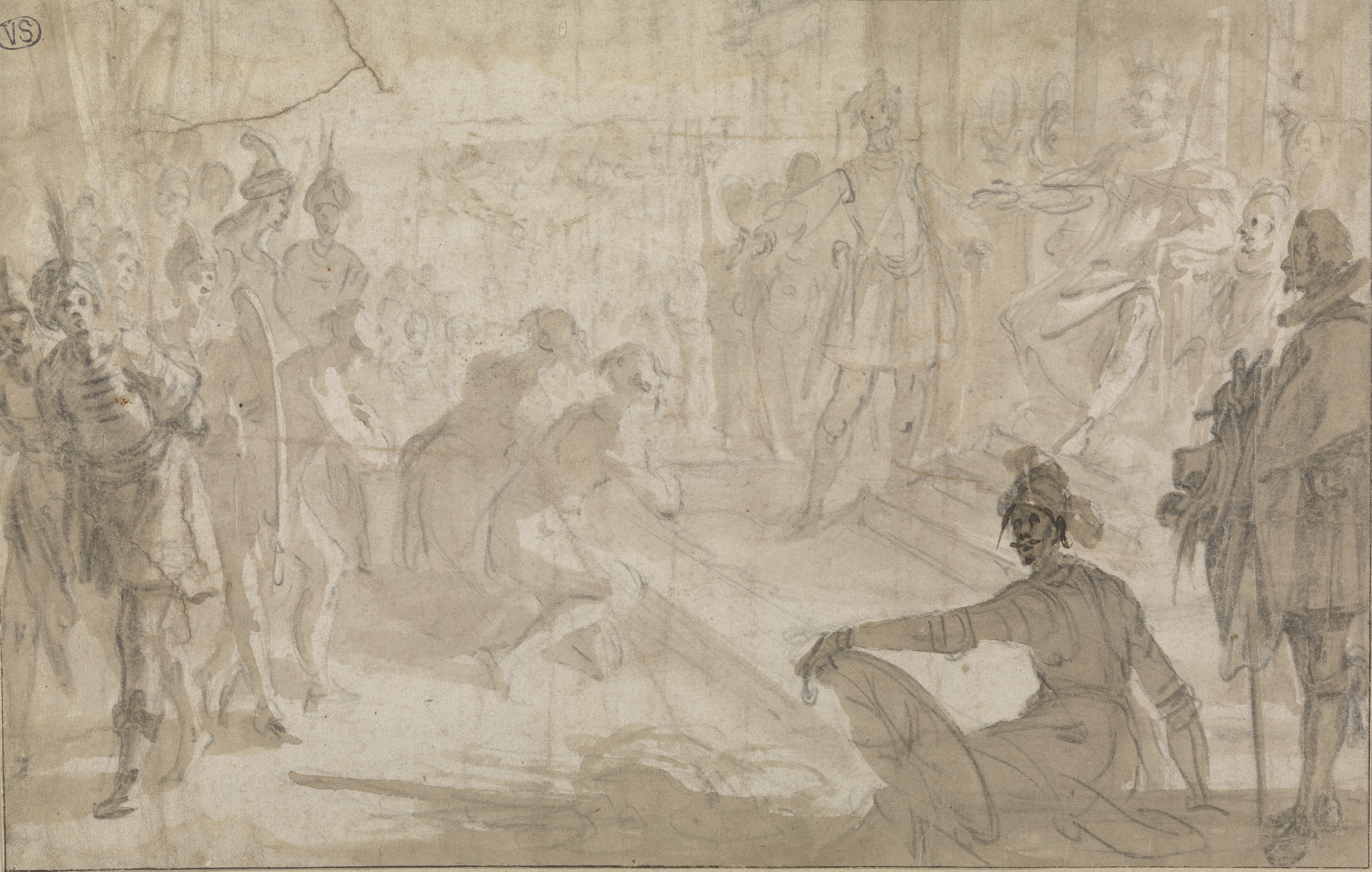
4. Religion
Religion largely defined the character of 17th-century society. This certainly applied to Florence and Lorraine, where the dukes acted as fervent defenders of the Catholic faith against threats from both the ‘outside’ (the Muslim world) and ‘inside’ (Protestantism). Callot did a large number of religious prints, especially in Nancy. They illustrate the Catholic devotions of the time and reflect the dogmas and reforms of the Council of Trent (1545-1563), which was meant to lead to the triumph of the Catholic faith.
Judith with the Head of Holofernes
Callot only rarely illustrated scenes from the Old Testament. However, the story of Judith, who saved her people and faith by beheading the Assyrian general Holofernes, was a very popular story in the Baroque period, because it symbolised the triumph of the Catholic church over Protestantism. The print was engraved entirely with the point of a needle (gravée au pointillé), a demanding technique that Callot only used a few times.
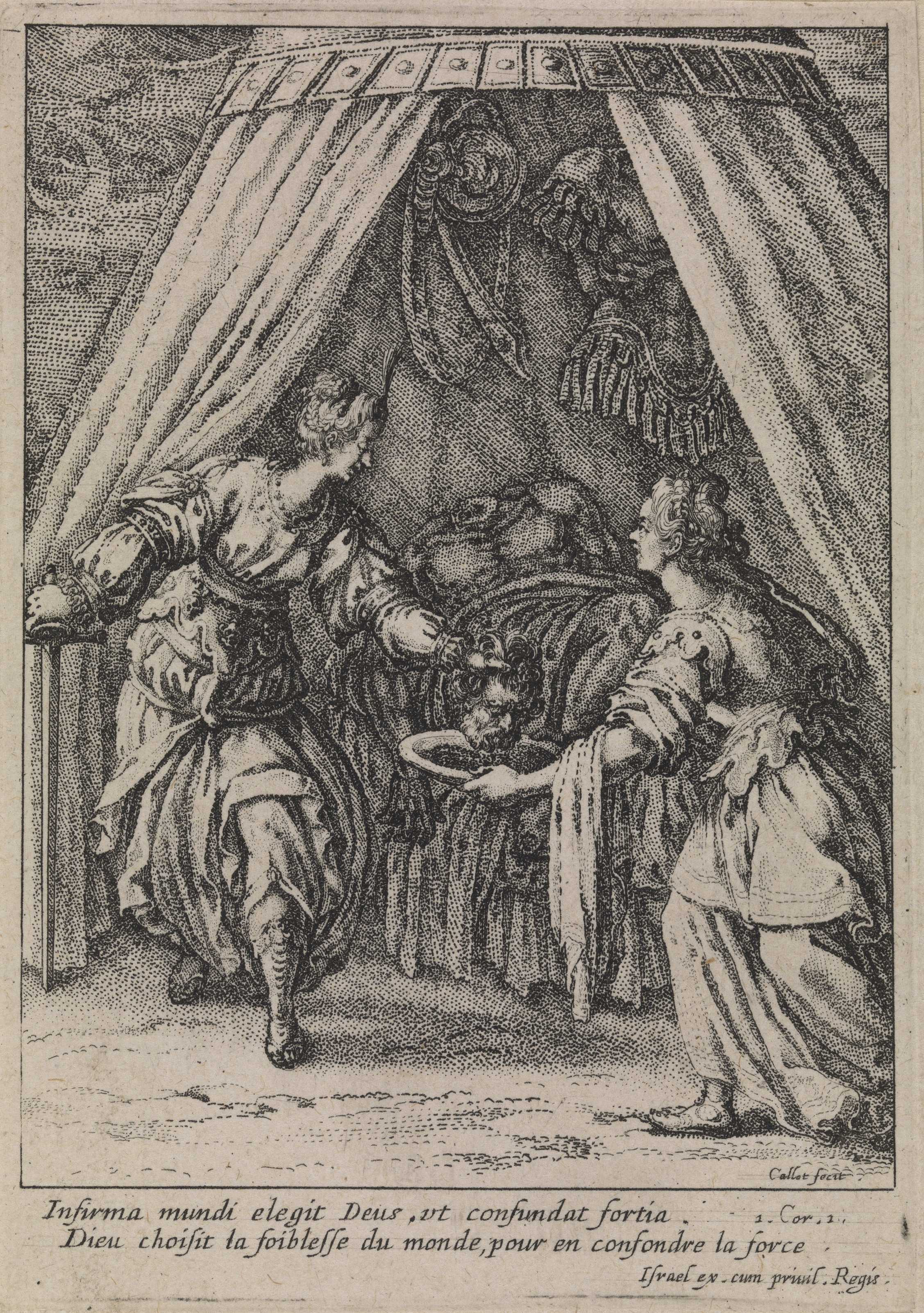
The Holy Family Having Dinner by Candlelight
The portrayal of the Holy Family in a sober and intimate domestic setting was extremely popular during the Counter-Reformation. Jesus’ cup is a reference to the chalice which, later in his life, he blessed and passed on to his Apostles at the Last Supper. In this way Callot cites the essence of the Catholic religion, the salvation of mankind by Christ’s sacrifice. Joseph, whose presence in portrayals of the Holy Family is usually inconspicuous, here plays a notably active and prominent part.
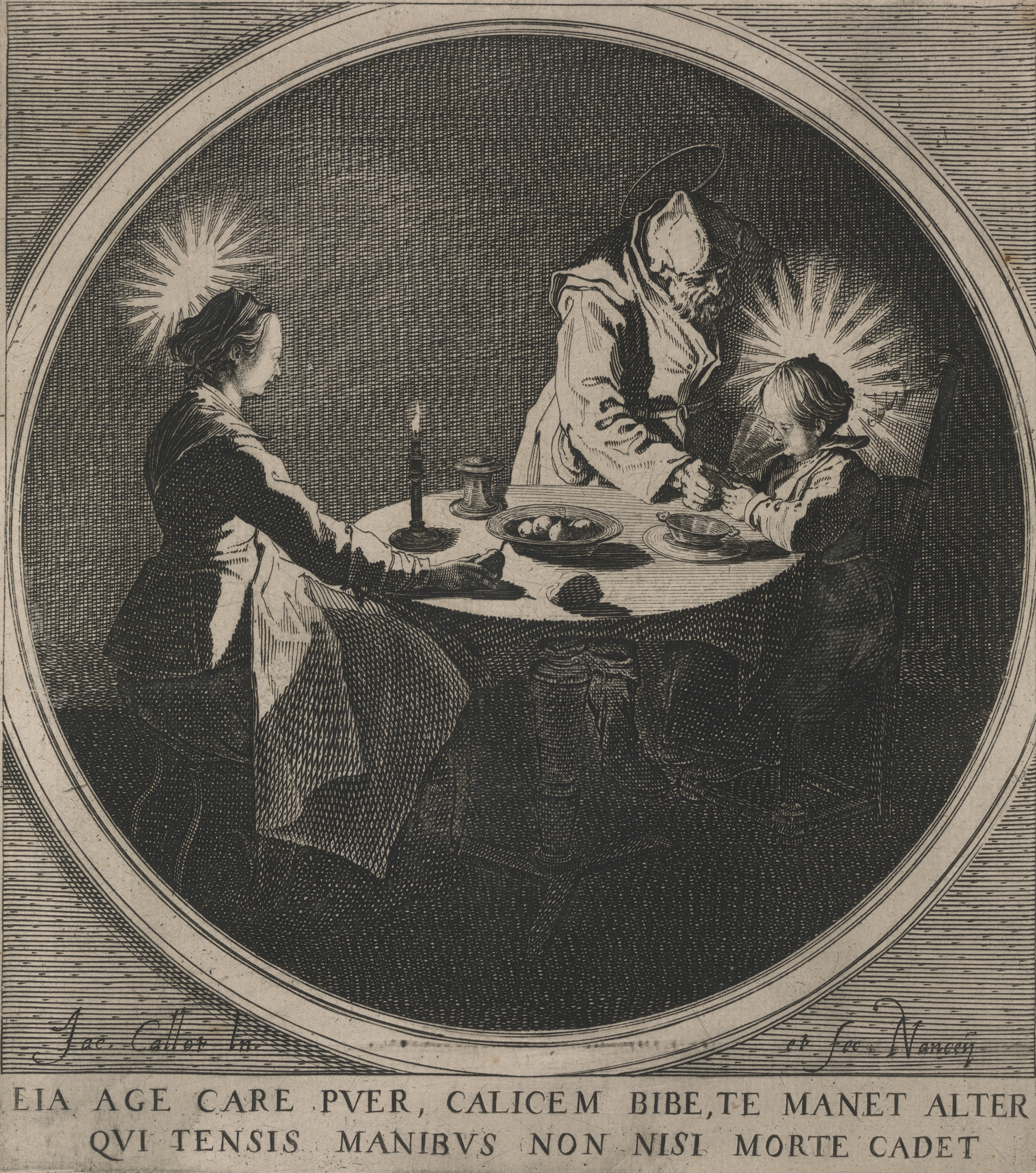
The Temptation of Saint Anthony
This print is Jacques Callot’s masterpiece and represents the culmination of his technical expertise, his rich imagination and his predilection for theatrical effects. The theme of Saint Anthony’s temptation by the Devil was already popular in the Middle Ages, and symbolises the Christian soul tempted by the pleasures of the world. Anthony, on the right, raises his crucifix to ward off the Devil. In this instance, he is not portrayed as a victim, as in the Middle Ages, but as a victor over evil. It illustrates the optimism of the triumphant Catholic church in the 17th century. The Bosch-like hell includes some personifications of the Deadly Sins, such as the naked woman with a mirror, who represents a combination of Lust and Vanity, or the woman pulling out her hair, who symbolises Envy. Callot also did a separate series of prints of the Deadly Sins, which are shown alongside The Temptation of Saint Anthony.
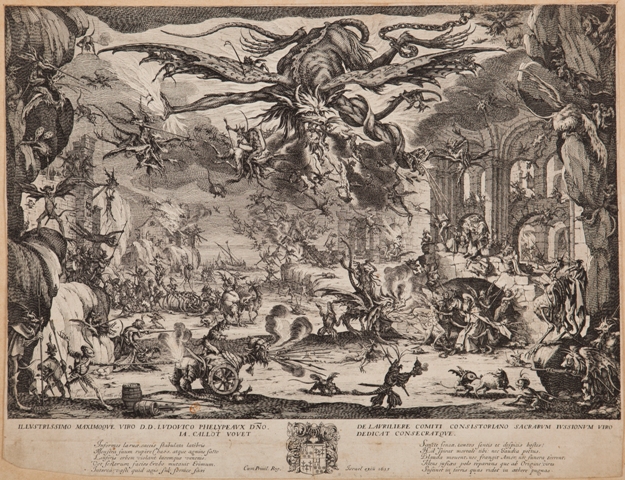
5. Landscape
Callot also had an eye for his natural surroundings. But his views of nature are rarely pure landscapes, teeming as they are with human and animal activity. Like the rest of his oeuvre, they are a combination of fantasy and reality. One good example are his Italian landscapes, which on the one hand comprise identifiable views in Tuscany and on the other imagined rock formations that look more like they originated in the theatre. Lastly, Callot also made a few landscapes with allegorical meaning.
The Life of the Virgin shown in Emblems
These prints are from a series of 26 emblems related to the life of Mary. Emblems are small illustrations with short, explanatory inscriptions underneath. The emblems concerning the life of Mary were meant as an aid to prayer and meditation. Although the absence of the inscription makes the allegorical message unclear, these images are immensely eloquent, and once again demonstrate the artist’s lively imagination. Below, by way of illustration, are several of the verses that accompanied the illustrations.

